
A synagogue, also called a shul or a temple, is a place of worship for Jews and Samaritans. It has a place for prayer where Jews attend religious services or special ceremonies such as weddings, bar and bat mitzvahs, choir performances, and children's plays. They also have rooms for study, social halls, administrative and charitable offices, classrooms for religious and Hebrew studies, and many places to sit and congregate. They often display commemorative, historic, or modern artwork alongside items of Jewish historical significance or history about the synagogue itself.

Synagogue architecture often follows styles in vogue at the place and time of construction. There is no set blueprint for synagogues and the architectural shapes and interior designs of synagogues vary greatly. According to tradition, the Shekhinah or divine presence can be found wherever there is a minyan, a quorum, of ten. A synagogue always contains an Torah ark where the Torah scrolls are kept, called the aron qodesh by Ashkenazi Jews and the hekhal by Sephardic Jews.

The Leopoldstädter Tempel, also known as the Israelitische Bethaus in der Wiener Vorstadt Leopoldstadt, was a Jewish congregation and synagogue, located on Tempelgasse 5, in Leopoldstadt, in the 2nd district of Vienna, Austria. Completed in 1858, the synagogue was destroyed as a result of Kristallnacht. A monument marks the location of the former synagogue.
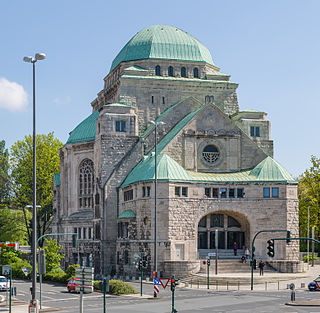
The Old Synagogue in Essen is one of the largest, best preserved and architecturally most impressive testimonies to Jewish culture in pre-war Germany. Built in the centre of the city, the Byzantine style former Synagogue was originally consecrated as the Neue Synagoge in 1913; it now houses an institution dedicated to documenting and promoting the history of the city's former Jewish community.

The Hietzinger Synagogue, or New World Synagogue, was a Jewish congregation and synagogue, that was located at Eitelbergergasse 22, in Hietzing, in the 13th district of Vienna, Austria. The Hietzing Synagogue was the only free-standing synagogue built in Vienna between World War I and World War II; subsequently destroyed as a result of Kristallnacht.

The Great Synagogue of London was a former Orthodox Jewish congregation and synagogue, located in the City of London, England, in the United Kingdom. The synagogue was, for centuries, the centre of Ashkenazi life in London. Built north of Aldgate in the 17th century, it was destroyed during World War II, in the Blitz.

The Dohány Street Synagogue, also known as the Great Synagogue or Tabakgasse Synagogue, is a historical building on Dohány Street in Erzsébetváros, the 7th district of Budapest, Hungary. It is the largest synagogue in Europe, seating 3,000 people and is a centre of Neolog Judaism.
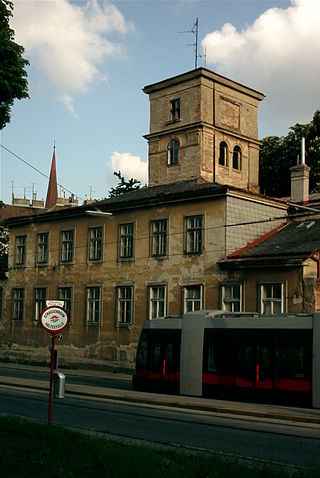
Josef Georg Kornhäusel was an Austrian architect of the first half of the 19th century. He primarily employed the contemporary style of Neoclassical architecture, moving to the Biedermeier style in his later oevre.
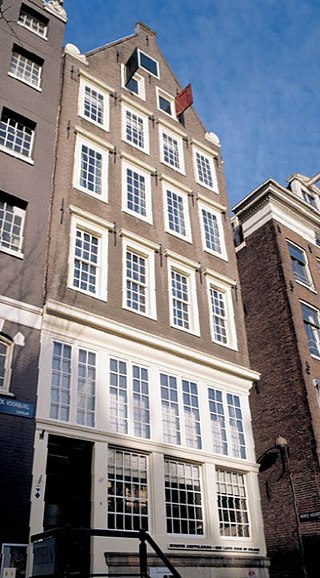
A clandestine church, defined by historian Benjamin J. Kaplan as a "semi-clandestine church", is a house of worship used by religious minorities whose communal worship is tolerated by those of the majority faith on condition that it is discreet and not conducted in public spaces. Schuilkerken are commonly built inside houses or other buildings, and do not show a public façade to the street. They were an important advance in religious tolerance in the wake of the Reformation, an era when worship services conducted by minority faiths were often banned and sometimes penalized by exile or execution.
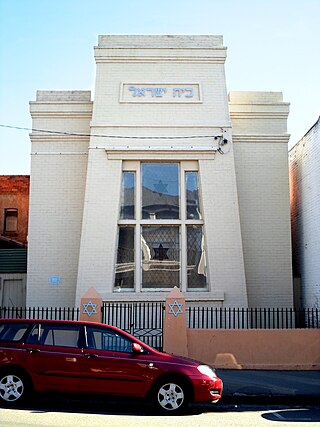
The Launceston Synagogue is a heritage-listed building located in St. John's Street, Launceston, Tasmania, Australia, that served as a synagogue from 1846 until 1871, and again during the c. 1930s until its closure in 1961 and reopened in 1984.
The 1981 Vienna synagogue attack was a terror attack that occurred 29 August 1981. The incident took place in the Stadttempel of Vienna, Austria carried out by two terrorists of the Abu Nidal Organization.
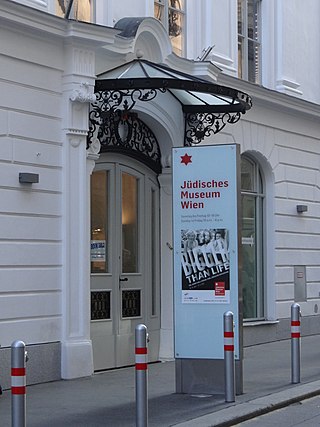
The Jüdisches Museum Wien, trading as Jüdisches Museum der Stadt Wien GmbH or the Jewish Museum Vienna, is a museum of Jewish history, life and religion in Austria. The museum is present on two locations, in the Palais Eskeles in the Dorotheergasse and in the Judenplatz, and has distinguished itself by a very active programme of exhibitions and outreach events highlighting the past and present of Jewish culture in Austria. The current director is Barbara Staudinger and the chief curator is Astrid Peterle.

The Zagreb Synagogue was a former Orthodox Jewish congregation and synagogue, located in Zagreb, in modern-day Croatia. The synagogue building was constructed in 1867 in the Kingdom of Croatia-Slavonia within the Austrian Empire, and was used until it was demolished by the Ustaše fascist authorities in 1941 in the Axis-aligned Independent State of Croatia.
The history of the Jews in Vienna, Austria, goes back over eight hundred years. There is evidence of a Jewish presence in Vienna from the 12th century onwards.

The Jewish Community of Vienna is the body that represents Vienna's Orthodox Jewish community. Today, the IKG has around 10,000 members. Throughout history, it has represented almost all of Austria's Jews, whose numbers are sufficient to form communities in only a few other cities in Austria.
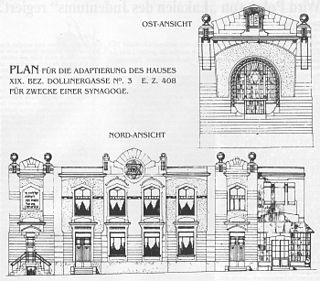
The Döbling Synagogue was a former Jewish synagogue that was located in the Dollinergasse in the suburb of Oberdöbling, in Döbling, in the 19th district of Vienna, Austria. Completed in 1907, the building was ruined and partially destroyed in the Kristallnacht pogrom of November 1938. Later, the synagogue was deconsecrated and in 1995, it was replaced with a modern apartment tower.

The White Stork Synagogue is a nineteenth-century synagogue in Wrocław, Poland. Rededicated in 2010 after a decade-long renovation, it is the religious and cultural centre of the local Jewish community, under the auspices of the Union of Jewish Religious Communities in Poland. It is the only synagogue in Wrocław to have survived the Holocaust.
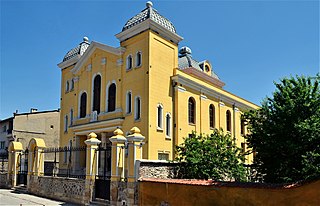
Grand Synagogue of Edirne, aka Adrianople Synagogue is a historic Sephardi synagogue located in Maarif Street of Edirne, Turkey. It was designed in the Moorish Revival style and restored in 2015.
The 2020 Vienna attack was a series of shootings that occurred on 2 November 2020 in Vienna, Austria. A few hours before the city was to enter a lockdown due to the COVID-19 pandemic, a lone gunman started shooting in the busy city centre. Four civilians were killed in the attack and 23 others were injured, seven critically, including a police officer. The attacker was killed by police and was later identified as an ISIL sympathizer. Officials said that the attack was an incident of Islamist terrorism.
The Holocaust in Austria was the systematic persecution, plunder and extermination of Jews by German and Austrian Nazis from 1938 to 1945. Part of the wider-Holocaust, pervasive persecution of Jews was immediate after the German annexation of Austria, known as the Anschluss. An estimated 70,000 Jews were murdered and 125,000 forced to flee Austria as refugees.



















